|
I. The phonetic systems of the Chinese language
Introduction : There are several phonetic systems, among which two to know necessarily, Pinyin ( Lantinized Chinese ) and Zhuyin ( Traditional Chinese characters and phonetics ). The Chinese characters are very difficult to read for the Westerners. By means of these systems of phonetic transcription of the Chinese ideograms, you will learn a solid base of the pronunciation for a first approach of this beautiful language. 1. Pinyin : Finalized by using the Latin alphabet, and used since 1958. It was adopted as official system of transcription for all the countries. A Chinese character decomposes into three elements: - An initial ( or called consonant ), sometimes absent ; - A final ( or called vowel ) simple, complex or nasalized ; - A tone* ( The mandarin Chinese is a language with tones ) * There are four tones: ( and a neutral tone apart which pronounces light etest always support of the word which precedes it ) - 1st tone, high level flat and long: — - 2nd tone, medium rising to high level: / - 3rd tone, low dipping long: √ - 4th tone, low level falling short and loud: \ Tones are important. Such tone, such senses: For example: bā ( 八 , eight ), bá ( 拔 , tear away ) bă ( 靶 , target ) bà ( 爸 , father ) măi ( 买 , buy ), mài ( 卖 , sell ) And as the words expressions are rare in Chinese, we add the neutral tone in the cases as bàba ( 爸爸 , father ) or bízi ( 鼻子 , nose )...etc. * The diagram of tones : 
2. Iinitials and finals in the pinyin :
3. The pronunciation : Even if the Chinese does not pronounce as French or English, in the practice of this system of the Latinized Chinese, the pronunciation of phonemes gets closer more in that from English, notably the initiales as « h » in how ; « r », road ; « b », speak ; « p », pig ; « d », student ; « t » , teacher ; the finals as « er » in teacher. In front of public French speaker we can only demonstrate that by the resembling pronunciation. INITIALS : m, f, n, l, s pronounce as in French ; b, d, g pronounce p, t, k ; z : dz ; zh : dj ; sh : ch ; The following ones are inhaled, which means that it is necessary to blow after their pronunciation: p, t, k : p' t' k' c, ch, q : ts', tch', tch ( strong ) x pronounces a little wet h pronounces between the English h, the German ch, and the Spanish jota r pronounces as a j light j pronounces as a t light FINALS : an pronounces as ann' and no an as in French an of the Nouvel An ( Cinese New Year ) r pronounces as eul (or the suffix -er English as in teacher) ian, yan pronounce as hyèn In ang, iang, eng, ng mark the nasalisation and the g is not pronounced. *u pronounce or except after q, x, j, y where it is pronounced u ü = u i pronounce as in French except after z, c, s, zh, ch, sh, r where it notes an absence of final which is situated between e and eu N.B. There is another system 注音 Zhuyin (MPS) : based on the ancient ideograms, the zhuyin is a phonetic system which Chinese teach to the children since 1936. A Chinese character corresponds in one monosyllable which can decompose into three elements: - An initial, sometimes absent, for exemple: ㄅ ㄆ ㄇ ㄈ ; - A final simple, complex or nasalised, for exemple: ㄚ ㄨ ㄛ 一 ㄠ ; - A tone* |
|||
Copyright © 2002-2025 Lilicat. Tous droits réservés. lilicat@lilicat.com |
||||